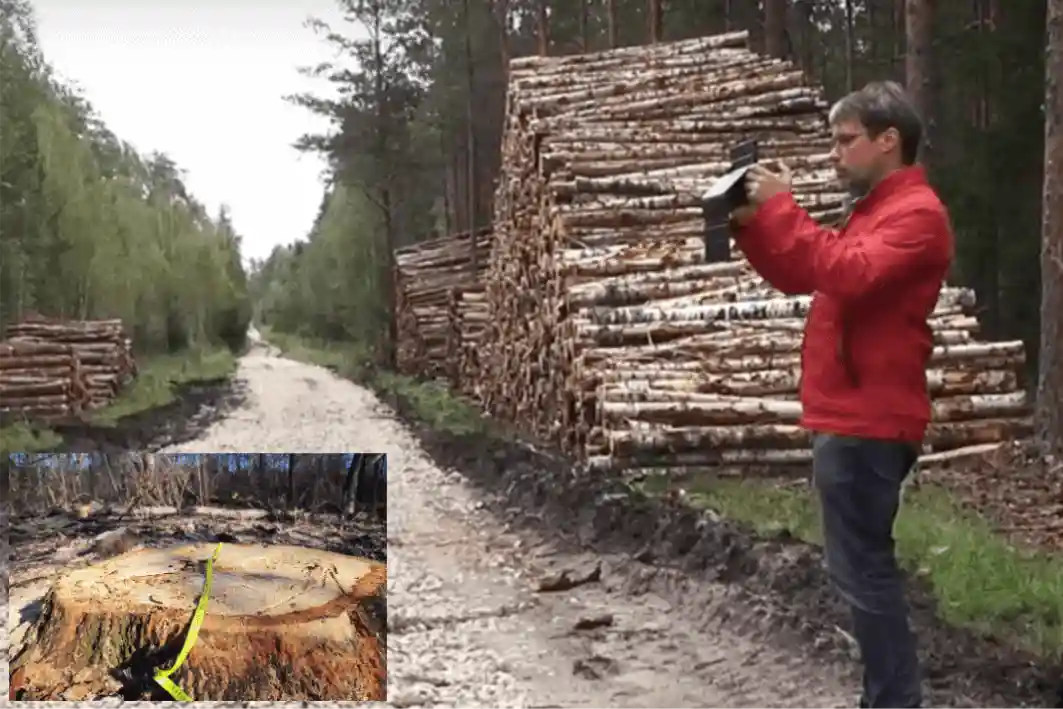Changing your daily processes and learning to adapt to new technologies always require some effort and attention. Sometimes these changes often demand too much, so it’s logical to ask –is it worth it?
Well we’ve crunched the numbers to show you how easy it is to make this change.
Digital vs manual timber measurement appears complicated at the beginning. In order to get through the process you need to know will changing to newer technologies pay off? Hereby i’ll sum up why it is really worth it:
So, for example, let’s take a pile (truckload) that has approximately 30 cbm, high-quality sawlogs, standard length of 3m. In order to get the maximum price out of the timber, the person needs to measure it one-by one. If the log has an irregular shape, the log needs to be measured from the widest and narrowest part and the average diameter calculated.
Manual Timber Measurement
All the log diameters need to be recorded and usually they are marked on paper. It is more difficult when it is raining, as paper gets wet. To avoid that you measure log twice or you miss one every log that is measured, is marked with spray. The log measurer runs 3 processes simultaneously: measurement, marking, writing. When the pile is being measured, somebody is required to take the paper into office, where he/she (or somebody else in the office) compiles the measurement report. In total time taken to measure 30 cbm manually and do all the required paperwork it’s estimated to take approximately 45 minutes.

Manual Measurement with a Digital Caliper
Calipers, whilst they can vary in price a decent good working one can cost around $1,670. Compared to manual measurement, measurer doesn’t need to write diameters on the paper as all the data is saved digitally. Still every log needs to be measured and marked separately that is a time-consuming process. Caliper is taken to the office and data transferred into computer.
In total time spent for measurement and data transfer is approximately 30 minutes.
![]()
Digital Timber Measurement
Digital measurement speeds up the process, enabling the measurer to measure pile in 2-5 minutes. The measurer is required to use a reference (1m measurement-tape), make the picture of the pile and insert the data. Even if the pile has a bad stacking quality or some logs are in shadows, the measurement can be corrected (logs added/deleted).
The data is stored in a storage module and from there it requires 2 clicks to make a measurement report.
Simple.
Cost Comparison
Labor costs: manual vs digital
Let’s examine the cost numbers behind the processes. The average salary of loggers per hour varies by country: in Europe it varies from €5-25, in the USA, $23.76 according to the U.S. Bureau of Labor Statistics. For the sake of argument, let’s agree that the European average is €15 (including all the taxes) and in the US $23. Meaning that to measure the pile and compile the measurement report of 30 cmb costs €11.25 in Europe and $17.25 in USA.
If you have invested into a digital caliper (life-cycle up to 5 years) in amount of $1670, measuring one pile on direct labor costs results €7.5 in Europe and $11.5 in the USA. After your purchase you’ll need to fact in the additional cost for calibration, that needs to be done after some time or order to have all your diameters correct.
If you are using Timbeter, the costs per measurement is €2-3, depending on the package. If you are using the monthly subscription, the cost is €150 per device and you have unlimited number of measurements. By comparing the numbers, even purchasing the picture-based package, the saving is a minimum 3.75 times in EU and 4.83 times in the US.
But these are only direct costs.
Consider the times when numbers have been inserted incorrectly, some papers have been lost, file hasn’t been saved correctly or some calculation errors happen. How long it takes to detect the reason for error?
Or more importantly, consider the situations where there is a disagreement with the buying/selling party? How do you solve the situation – probably you have to remeasure the pile once again? This again takes time and doesn’t guarantee a positive outcome.
Hardware Costs
Manual timber measurement requires purchasing of certain hardware tools. Calipers, whilst they can vary in price a decent good working one can cost around $1,670. Or you may use a professional measurement tool costing around $69. So the costs of buying this equipment upfront could cost around from $69-$1670.
Using a digital solution requires no initial upfront costs as no hardware is required.

Final Thoughts
So to conclude – when it comes to the digital measurements, there is a direct saving when you connect the time spent to measurement and paperwork. Even if you take only one measurement, you can reduce both your time and cost by up to 3.75 times.
What Timbeter’s power users advise is that by using Timbeter they can easily share their information about the measurements taken and thus speeding up the entire sales process, making more money in the short term.
You can improve your operational and sales processes by starting your free trial today or view the online demo to see how Timbeter works by clicking here.
